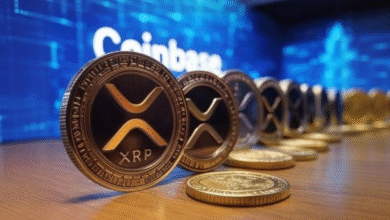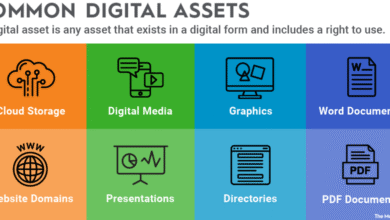Institutional Demand for Crypto: 400% Surge Reported

Institutional demand for crypto has reached unprecedented levels, with Sygnum reporting a staggering 400% increase in traditional securities trading within its blockchain-based DLT Treasury Management system since 2020. This surge reflects the growing integration of crypto with traditional finance, driven by the influx of institutional clients leveraging multi-asset treasury platforms. As these platforms enable firms to diversify their portfolios and capitalize on new yield opportunities, they cater to the evolving risk management needs of today’s investors. Furthermore, recent regulatory changes in the U.S. have facilitated a more conducive environment for banks to engage in crypto activities, underscoring a significant shift towards this digital asset space. The combination of these factors highlights a transformative moment where institutional interest in crypto is reshaping the financial landscape.
The increasing appetite from institutional investors for digital currencies signals a remarkable shift in the financial sector. Many institutions are now exploring ways to integrate cryptocurrencies within their traditional asset frameworks through advanced technology solutions, such as blockchain-based systems. Reports from organizations like Sygnum underline this trend, showing a notable uptick in activity among institutional clients investing in assets that blend both crypto and traditional finance. As these financial entities adopt innovative multi-asset treasury platforms, they are viewing crypto as a viable avenue for portfolio diversification and yield enhancement. This confluence of conventional finance and digital assets is paving the way for a new era in investment strategies.
Surge in Institutional Demand for Crypto
The substantial increase in institutional demand for crypto has been underscored by Sygnum’s recent report highlighting a staggering 400% average annual growth in trading volume. This remarkable rise is particularly significant for traditional securities that are now being traded through blockchain-based DLT systems. As institutional investors seek innovative solutions, the demand for a seamless integration of cryptocurrencies and traditional finance has soared, pushing firms to adapt quickly to these evolving market conditions.
The doubling of institutional clients engaging in crypto trading further emphasizes the transformative landscape of financial services. Investors are increasingly recognizing the potential of multi-asset treasury platforms, which not only facilitate enhanced liquidity but also provide diversified asset management capabilities. Such platforms have become essential tools for institutions looking to harness the benefits of digital assets while maintaining the rigorous standards of traditional finance.
Crypto and Traditional Finance Integration
The integration of crypto assets into traditional finance has opened up new avenues for asset allocation and treasury management. With regulatory changes in the U.S. encouraging banks to explore crypto activities, there has been a notable shift in how institutional investors perceive digital currencies. This integration allows financial institutions to leverage blockchain technology as a means to streamline processes and reduce costs, making them more competitive in a digital-first economy.
As traditional financial institutions seek to capture market share in this rapidly evolving space, they are increasingly turning to blockchain-based solutions that enhance transparency and security. The rise of multi-asset treasury platforms exemplifies this trend, as they offer institutions the flexibility to combine crypto assets with traditional securities, thus broadening their investment strategies and optimizing returns.
The Role of Blockchain-Based DLT in Finance
Blockchain technology, particularly Distributed Ledger Technology (DLT), plays a pivotal role in reshaping the financial landscape. DLT provides an immutable, transparent, and efficient framework for handling transactions and record-keeping, which is crucial for both traditional and crypto assets. Institutions are now leveraging these capabilities to improve their operational efficiencies and gain a competitive edge.
Furthermore, by implementing blockchain solutions, financial institutions can significantly reduce settlement times and eliminate intermediaries, which traditionally add layers of complexity and cost to financial transactions. This technological shift aligns with the growing preference for decentralized finance, highlighting a clear convergence between conventional financial services and the burgeoning cryptocurrency market.
Impact of U.S. Regulatory Changes on Crypto Demand
Recent regulatory changes in the United States have ushered in a new era of opportunity for institutional investors interested in the digital asset space. The Federal Reserve’s relaxation of restrictions on banks engaging with crypto and stablecoin activities has substantially enhanced institutional confidence in investing in these assets. This favorable regulatory environment has facilitated a surge in interest, as institutions seek to capitalize on the potential returns from crypto integration.
This regulatory shift encourages more traditional finance players to enter the crypto space, where they can diversify their portfolios and mitigate risks associated with market volatility. As more institutional players embrace these changes, the demand for products and services that blend crypto offerings with traditional finance will likely continue to expand, proving vital for the industry’s growth.
Multi-Asset Treasury Platforms: The Future of Asset Management
The emergence of multi-asset treasury platforms marks a significant development in asset management, particularly as more institutions recognize the need for integrated approaches to handle diverse asset classes. These platforms enable stakeholders to manage both crypto and traditional assets, providing a comprehensive view of their portfolios. By facilitating easier transitions between asset types, firms can enhance liquidity and capitalize on investment opportunities as they arise.
Moreover, multi-asset treasury platforms are increasingly equipped with advanced analytics and reporting tools, essential for risk assessment and management. With institutional investors clamoring for greater control over their investments and the ability to respond to market dynamics swiftly, these platforms are poised to redefine standards in treasury management, aligning financial strategies with the contemporary demands of the marketplace.
The Evolution of Institutional Crypto Adoption
Institutional adoption of cryptocurrency has evolved significantly over the past few years, transforming from a contentious topic into a burgeoning aspect of finance. As institutions begin to fathom the benefits of integrating crypto into their operations, they are increasingly investing in blockchain technologies and seeking partnerships with crypto-native firms. This evolution speaks to the growing acceptance and understanding of digital assets in traditional finance.
As companies incorporate cryptocurrency into their business models, experts see a future where digital assets are seamlessly woven into the fabric of financial ecosystems, allowing for greater innovation and efficiency in financial services. Therefore, understanding this evolution is crucial for stakeholders looking to capitalize on the intersection of crypto and traditional finance.
Sygnum’s Contributions to Crypto Integration
As a pioneer in the realm of digital asset banking, Sygnum has played a critical role in the integration of crypto and traditional finance. By providing institutions with blockchain-based treasury management solutions, Sygnum has enabled financial services firms to explore new modalities of asset management. Their innovative approach includes trading infrastructures that support a wide range of asset types under one platform.
The enhancements brought about by Sygnum are particularly beneficial for engaging new clients and fulfilling the modern demands of treasury management. With their guidance, institutions can navigate the complexities of adopting crypto solutions while ensuring compliance with regulatory standards, thus fostering wider acceptance within the traditional finance sector.
Challenges Faced in Institutional Crypto Adoption
Despite the significant strides in institutional demand for crypto, there still exist numerous challenges that firms must navigate. Issues surrounding regulatory compliance, volatility in digital asset prices, and the lack of standardized processes continue to pose barriers for many financial institutions. These complexities can hinder the full integration of crypto into traditional finance, affecting overall adoption rates.
To overcome these challenges, industry players must advocate for clearer regulatory frameworks and invest in education surrounding cryptocurrency. By addressing these concerns, institutions will be better positioning themselves to leverage crypto assets effectively and create a more integrated financial market where both digital and traditional assets coexist.
Future Trends in Crypto and Traditional Finance Linkage
Looking ahead, the linkage between crypto and traditional finance is expected to deepen as technological advancements propel further innovations in financial markets. Traditional financial institutions will likely continue to invest in digital assets as new use cases emerge, fostering a more integrated financial ecosystem. Predictions indicate an increased focus on compliance technologies, decentralized finance applications, and crypto education to support this growth.
Additionally, multi-asset strategies will likely become more prevalent as institutions seek diversified portfolios that encompass both cryptocurrency and traditional assets. As these trends solidify, it’s clear that the future of finance will involve a unique blend of these two worlds, creating boundless opportunities for innovation and strategic investment within the sector.
Frequently Asked Questions
What is driving the institutional demand for crypto according to Sygnum reports?
Recent Sygnum reports indicate that a significant driver of institutional demand for crypto is the 400% surge in trading volume on blockchain-based DLT Treasury Management systems. This rise is coupled with an increased interest in multi-asset treasury platforms that bridge crypto with traditional finance, especially following regulatory changes that enhance banks’ capabilities in crypto markets.
How does crypto TradFi integration benefit institutional investors?
Crypto TradFi integration presents numerous benefits for institutional investors. It allows organizations to diversify their portfolios with digital assets, manage risks more effectively through sophisticated treasury management systems, and seize new yield opportunities, which aligns with the changing preferences and requirements of institutional clients.
Why is there a notable increase in trading volume on blockchain-based DLT systems?
The notable increase in trading volume on blockchain-based DLT systems can be attributed to institutional investors’ growing confidence in digital assets. Sygnum’s reports show a 400% average increase in trading volume, driven by improved regulatory frameworks and the demand for multi-asset treasury platforms that combine crypto trading with traditional securities.
What impact have recent regulatory changes had on institutional demand for crypto?
Recent regulatory changes, particularly from U.S. authorities regarding banks’ involvement with crypto and stablecoins, have positively impacted institutional demand for crypto. These changes have created a more favorable environment for traditional finance to integrate with digital assets, promoting the use of multi-asset treasury platforms that appeal to institutions.
What are the advantages of using multi-asset treasury platforms for institutional clients?
Multi-asset treasury platforms offer institutional clients numerous advantages, including enhanced portfolio diversification, effective risk management, and access to innovative yield opportunities in a rapidly evolving financial landscape. By integrating blockchain-based DLT with traditional assets, these platforms cater to the increasing institutional demand for comprehensive financial solutions.
How has the profile of institutional clients in crypto changed in recent years?
The profile of institutional clients in the crypto space has evolved, reflecting a doubling of participants trading digital assets in the past year alone, as shared in Sygnum reports. This shift signifies a growing acceptance and active participation of institutional investors in the crypto market, primarily influenced by the integration of traditional finance with digital assets through regulated platforms.
What role does blockchain technology play in meeting institutional demand for crypto?
Blockchain technology plays a crucial role in meeting institutional demand for crypto by providing a secure, transparent, and efficient framework for trading and managing digital assets. As evidenced by Sygnum’s findings, the advancement of blockchain-based DLT systems facilitates increased trading volumes and enhances the operational capabilities of institutional investors in the crypto space.
| Key Points | Details |
|---|---|
| Institutional Demand Surge | Sygnum reported a 400% increase in trading volume on its DLT Treasury Management system since 2020. |
| Increase in Clients | The number of institutional clients trading with Sygnum has doubled over the past year. |
| Impact of Regulatory Changes | Recent U.S. regulatory changes, including the Federal Reserve relaxing restrictions, have fueled growth. |
| Market Evolution | Institutional investors are increasingly interested in multi-asset treasury platforms that bridge crypto and traditional finance. |
| Benefits for Institutional Investors | These platforms help in portfolio diversification, risk management, and accessing new yield opportunities. |
Summary
Institutional demand for crypto has surged significantly, highlighted by Sygnum’s recent report of a 400% increase in trading volumes since 2020. This trend reflects a shift in how institutional investors view blockchain technology and digital assets, particularly in the context of changing regulatory environments. As more institutions recognize the potential benefits of integrating crypto into their portfolios, including enhanced risk management and portfolio diversification, the intersection of traditional finance and cryptocurrency continues to evolve. The expansion of multi-asset treasury platforms will likely play a critical role in shaping the future of institutional investments.




